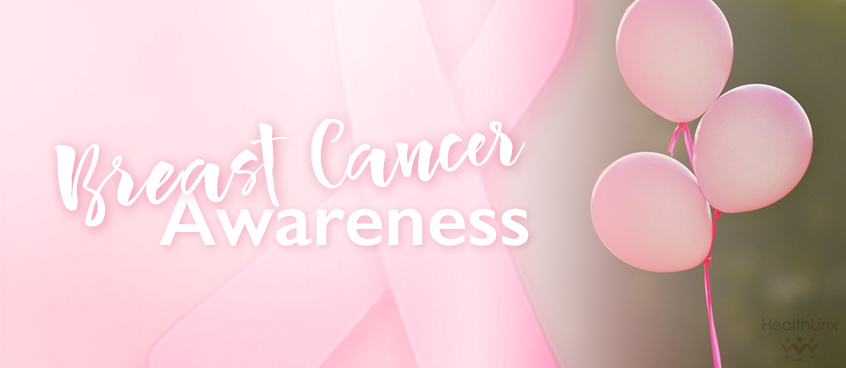Many of us know someone, a friend, family member or even yourself, who has had the diagnosis of breast cancer. As October is Breast Cancer Awareness Month, I am sure you have seen everyone from the airlines to athletic teams wearing pink to honor those who have had breast cancer. Please help by understanding the risks, making healthy choices regarding diet and exercise, and following the recommendations for mammogram screening tests. And, of course, wear pink in honor of those you know who have been affected by breast cancer.
- Approximately 1 in 8 women in the U.S. (around 12%) will develop breast cancer at some point in her life.
- It is estimated that 316,000 new cases of breast cancer will be diagnosed in women in the U.S. in 2017.
- Approximately 2,470 new cases of invasive breast cancer are expected to be diagnosed in men in 2017.
- Approximately 40,610 women in the U.S. are expected to die in 2017 from breast cancer, although death rates have been decreasing since 1989. Women under 50 have experienced larger decreases. These decreases are thought to be the result of advances in treatment, earlier detection through screening, and increased awareness.
- For women in the U.S., breast cancer death rates are higher than those for any cancer other than lung cancer.
- Aside from skin cancer, breast cancer is the most commonly diagnosed cancer among American women. In 2017, it’s estimated that about 30% of newly diagnosed cancers in women will be breast cancers.
- In women under 45, breast cancer is more common in African American women than white women.
- As of March 2017, there are more than 3.1 million women with a history of breast cancer in the U.S.
- A woman’s risk of breast cancer nearly doubles if she has a first-degree relative (mother, sister, daughter) who has been diagnosed with breast cancer.
- Approximately 5-10% of breast cancers can be linked to gene mutations (abnormal changes) inherited from one’s mother or father. Approximately 85% of breast cancers occur in women who have no family history of breast cancer.
- The most significant risk factors for breast cancer are gender (being a woman) and age (growing older).
- Breast cancer incidence rates in the U.S. began decreasing in 2000. One theory is that this decrease was partially due to the reduced use of hormone replacement therapy (HRT).



